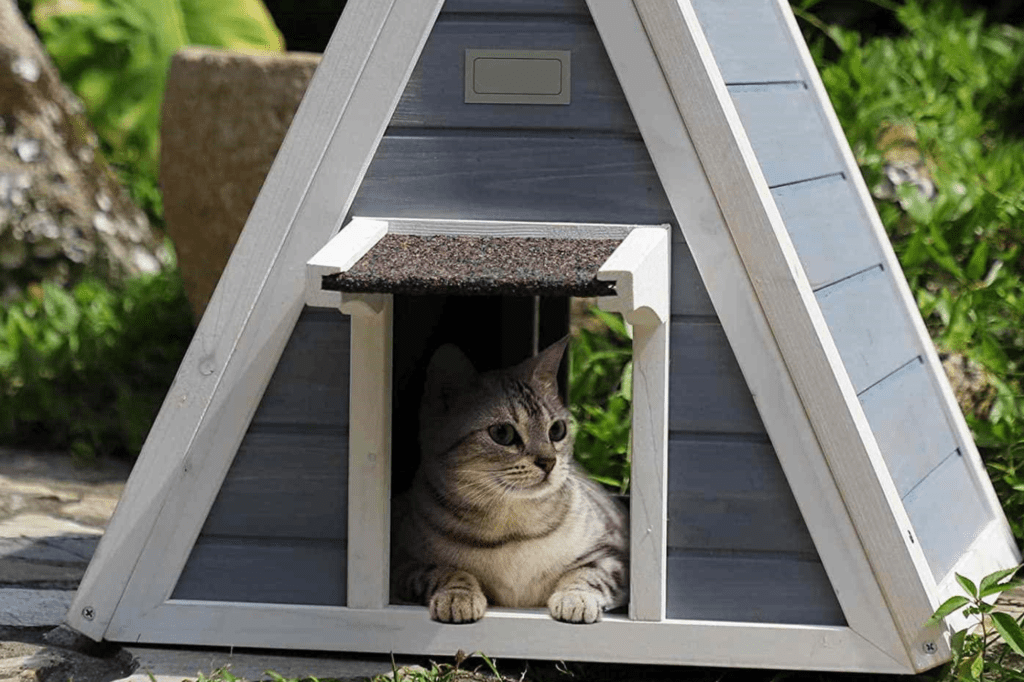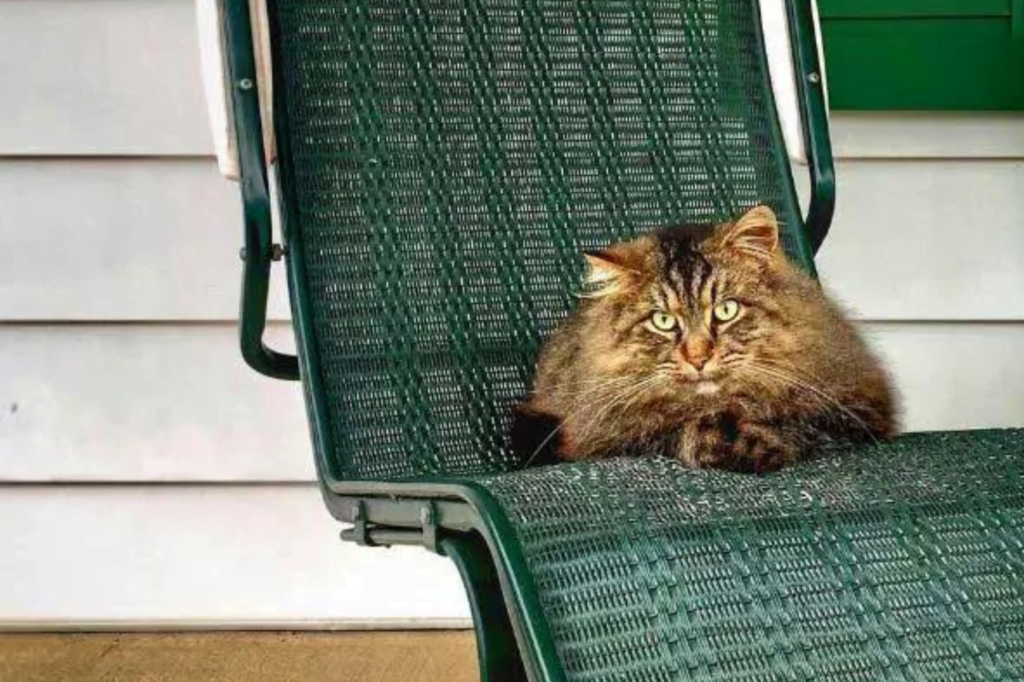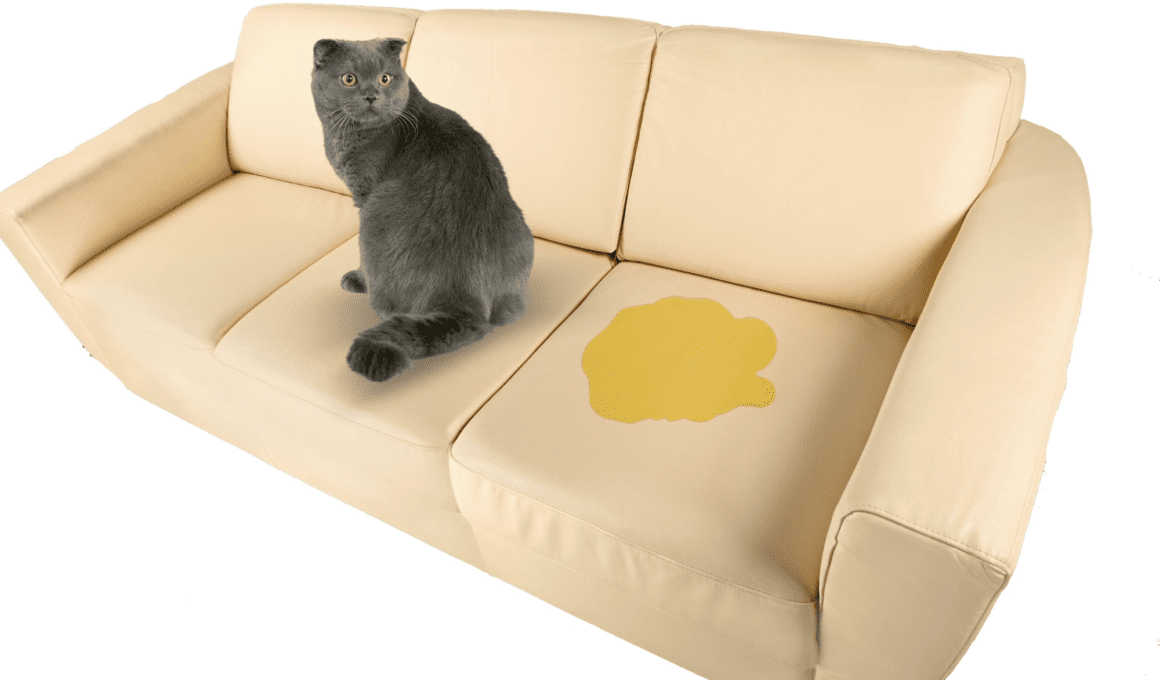Quick Summary
- Providing a separate outdoor space for cats can help prevent accidents
- Adding cat-friendly features to furniture can discourage peeing
- Offering multiple litter box options is crucial
- Regular cleaning and sanitizing is necessary
Understand the Reasons Behind the Behavior
Before you start implementing solutions, it’s important to understand why your furry friend is using your outdoor furniture as their personal bathroom. There can be several reasons for this inappropriate urination behavior. One possible reason is that your cat may be experiencing a medical issue, such as a urinary tract infection or bladder stones. It’s always a good idea to consult with your veterinarian to rule out any underlying health problems. Another reason for this behavior could be related to the litter box. Cats are clean animals by nature, and if their litter box is not up to their standards, they may seek alternative places to relieve themselves. Make sure you are providing a clean and accessible litter box for your cat. Try different types of litter and litter box locations to find what works best for your furry friend. Stress and anxiety can also contribute to this behavior. Cats are sensitive creatures, and changes in their environment or routine can cause them to act out. Provide a safe and secure space for your cat, away from any potential stressors. You can also try using pheromone sprays or diffusers to help create a calming environment. Understanding the reasons behind your cat’s inappropriate urination is crucial in finding a solution. By addressing any medical issues, modifying litter box behavior, and reducing stress, you can help keep your outdoor furniture free from unwanted accidents.Provide Adequate Litter Box Options
To prevent this behavior, it’s crucial to offer enough litter box options. Cats may start peeing on outdoor furniture if they don’t have access to a suitable place to relieve themselves. Litter box training is essential to ensure they understand where they should go. Providing multiple litter boxes throughout your yard can help deter them from using your furniture as a bathroom. When setting up the litter boxes, make sure they are easily accessible and placed in quiet and secluded areas. Cats prefer privacy when using the litter box, so having options in different locations can help accommodate their preferences. Additionally, using different types of litter can also be beneficial. Some cats may prefer a specific texture, so offering alternative options can encourage them to use the litter box instead of your furniture. To further emphasize the importance of providing adequate litter box options, here is a table highlighting the benefits of litter box training and alternative options:| Benefits of Litter Box Training | Benefits of Alternative Options | Benefits of Multiple Litter Boxes |
|---|---|---|
| Encourages proper bathroom habits | Provides additional options | Reduces competition among cats |
| Prevents furniture damage | Mimics outdoor conditions | Offers privacy for cats |
| Promotes a clean and safe environment | Reduces stress for cats | Ensures accessibility for all cats |
Keep Outdoor Furniture Clean and Odor-Free
Make sure you regularly clean and freshen up your patio seating to maintain its pristine condition and pleasant aroma. Here are four steps to help you keep your outdoor furniture clean and odor-free while preventing cat accidents:- Use cat-safe materials: When choosing outdoor furniture, opt for materials that are safe for cats. Avoid furniture made of toxic substances like treated wood or chemicals that could harm your furry friend.
- Cover your furniture: Consider using covers or waterproof cushions for your outdoor seating. This will not only protect your furniture from any accidents but also make it easier to clean. Look for covers that are easy to remove and wash.
- Regularly clean and sanitize: Clean your outdoor furniture regularly to remove any lingering odors and prevent them from becoming attractive spots for your cat to mark. Use a mild, cat-safe detergent and warm water to wipe down the surfaces. Don’t forget to clean the cushions as well.
- Use deterrents: To discourage cats from using your outdoor furniture as their personal bathroom, consider using cat deterrents such as motion-activated sprays or ultrasonic devices. These’ll emit a harmless but unpleasant smell or sound that’ll deter them from approaching the furniture.
Use Cat Repellents or Deterrents
Looking for a solution to keep your patio seating free from unwanted visitors? Try using cat repellents or deterrents! When it comes to keeping cats away from your outdoor furniture, there are a variety of products and natural deterrents available that can help create a safe and cat-free environment. Cat repellent products can be an effective way to discourage cats from marking their territory on your patio seating. These products typically contain ingredients that cats find unpleasant, such as citrus or peppermint. Simply spray the repellent on your furniture and the strong scent will deter cats from coming near. If you prefer a more natural approach, there are several deterrents that can be used as well. For example, placing orange peels or coffee grounds around your furniture can help keep cats at bay, as they dislike the smell of these substances. Another natural option is to plant certain plants that cats find unappealing, such as lavender or rosemary, near your seating area. By using cat repellents or deterrents, you can create a safe and cat-free environment for your outdoor furniture. These products and natural remedies can help keep unwanted visitors away, ensuring that your patio seating remains clean and odor-free. So give them a try and enjoy your outdoor space without the hassle of dealing with cat urine on your furniture.Create a Separate Outdoor Space for Your Cat
Creating a special outdoor haven for your furry friend will give them their own space to roam and play, ensuring their happiness and your peace of mind. One effective way to keep your cat from peeing on your outdoor furniture is by creating an outdoor enclosure specifically designed for them. This enclosed area will provide a safe and secure space for your cat to enjoy the outdoors without the temptation to use your furniture as a bathroom.
To start, choose a suitable location for the outdoor enclosure. It should be an area that’s easily accessible for your cat but away from any busy roads or potential dangers.
Next, set up a comfortable and cozy space within the enclosure. Provide plenty of toys, scratching posts, and hiding spots for your cat to explore and enjoy.
Additionally, consider incorporating litter box training into the outdoor enclosure. Place a litter box in a secluded corner of the enclosure and encourage your cat to use it regularly. Make sure to clean the litter box regularly to maintain a hygienic environment.
By creating a separate outdoor space for your cat and incorporating litter box training, you can successfully prevent them from peeing on your outdoor furniture. This will not only keep your furniture clean but also ensure the safety and happiness of your furry friend.
One effective way to keep your cat from peeing on your outdoor furniture is by creating an outdoor enclosure specifically designed for them. This enclosed area will provide a safe and secure space for your cat to enjoy the outdoors without the temptation to use your furniture as a bathroom.
To start, choose a suitable location for the outdoor enclosure. It should be an area that’s easily accessible for your cat but away from any busy roads or potential dangers.
Next, set up a comfortable and cozy space within the enclosure. Provide plenty of toys, scratching posts, and hiding spots for your cat to explore and enjoy.
Additionally, consider incorporating litter box training into the outdoor enclosure. Place a litter box in a secluded corner of the enclosure and encourage your cat to use it regularly. Make sure to clean the litter box regularly to maintain a hygienic environment.
By creating a separate outdoor space for your cat and incorporating litter box training, you can successfully prevent them from peeing on your outdoor furniture. This will not only keep your furniture clean but also ensure the safety and happiness of your furry friend.
Are there any methods from keeping cats away from outdoor garbage cans that can also be used to keep them from peeing on outdoor furniture?
Are there any effective methods to keep outdoor garbage cans smelling that can also deter cats from peeing on outdoor furniture? One potential solution is to use citrus peelings or vinegar around the furniture and garbage cans, as cats dislike the strong aroma. Additionally, installing motion-activated sprinklers near the affected area can startle cats and discourage them from urinating there.
Can Snow on a Deck Attract Cats to Pee on Outdoor Furniture?
Can snow load on deck attract cats to pee on outdoor furniture? Cats may be drawn to snow on a deck due to its soft texture, resembling litter. However, it is not the snow itself that entices cats to urinate on outdoor furniture, but rather their instinct to mark territory. Providing alternative designated areas can discourage this behavior.
Add Cat-Friendly Features to Your Outdoor Furniture
Spruce up your outdoor furniture with special features that’ll make it irresistible to your feline friend. By adding cat-friendly features, you can create a space that not only keeps your cat entertained but also discourages them from peeing on it. Here are some modifications you can make to your outdoor furniture to make it more appealing to your furry companion:
Here are some modifications you can make to your outdoor furniture to make it more appealing to your furry companion:
- Soft Cushions: Place soft and comfortable cushions on your outdoor furniture. Cats love to snuggle up on cozy surfaces, and providing them with a soft spot to rest will keep them away from peeing on it.
- Scratching Posts: Install scratching posts near your outdoor furniture. Cats have a natural instinct to scratch, and having a designated area for this activity will divert their attention from your furniture.
- Hideaways: Incorporate hiding spots or small shelters within or around your outdoor furniture. Cats love to explore and find cozy spots to relax, so providing them with these options will keep them entertained and away from urinating on your furniture.
- Catnip Infused: Sprinkle catnip on or around your outdoor furniture. Catnip is a natural stimulant for cats and can attract them to certain areas. By incorporating catnip, you can direct your cat’s attention away from your furniture and onto a more suitable spot.









